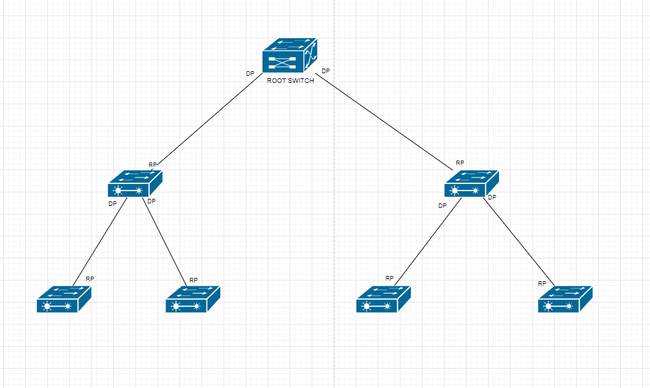- Community Home
- >
- Networking
- >
- Switching and Routing
- >
- Comware Based
- >
- Re: difference between two command lines (CLI)
Categories
Company
Local Language
Forums
Discussions
Forums
- Data Protection and Retention
- Entry Storage Systems
- Legacy
- Midrange and Enterprise Storage
- Storage Networking
- HPE Nimble Storage
Discussions
Forums
Discussions
Discussions
Forums
Discussions
Discussion Boards
Discussion Boards
Discussion Boards
Discussion Boards
- BladeSystem Infrastructure and Application Solutions
- Appliance Servers
- Alpha Servers
- BackOffice Products
- Internet Products
- HPE 9000 and HPE e3000 Servers
- Networking
- Netservers
- Secure OS Software for Linux
- Server Management (Insight Manager 7)
- Windows Server 2003
- Operating System - Tru64 Unix
- ProLiant Deployment and Provisioning
- Linux-Based Community / Regional
- Microsoft System Center Integration
Discussion Boards
Discussion Boards
Discussion Boards
Discussion Boards
Discussion Boards
Discussion Boards
Discussion Boards
Discussion Boards
Discussion Boards
Discussion Boards
Discussion Boards
Discussion Boards
Discussion Boards
Discussion Boards
Discussion Boards
Discussion Boards
Discussion Boards
Discussion Boards
Discussion Boards
Discussion Boards
Community
Resources
Forums
Blogs
- Subscribe to RSS Feed
- Mark Topic as New
- Mark Topic as Read
- Float this Topic for Current User
- Bookmark
- Subscribe
- Printer Friendly Page
- Mark as New
- Bookmark
- Subscribe
- Mute
- Subscribe to RSS Feed
- Permalink
- Report Inappropriate Content
09-03-2020 08:05 AM
09-03-2020 08:05 AM
Hello,
Can you explain to me the difference between the following command lines:
stp loop-protection
loopback-detection
Thanks for your reply.
Regards
Solved! Go to Solution.
- Mark as New
- Bookmark
- Subscribe
- Mute
- Subscribe to RSS Feed
- Permalink
- Report Inappropriate Content
09-03-2020 09:15 AM
09-03-2020 09:15 AM
Re: difference between two command lines (CLI)
Hello @JM0945,
stp-loop protection is like enabling loop guard.
By continuing to receive BPDUs from the upstream device, a device can maintain the state of the root port and blocked ports. However, link congestion or unidirectional link failures might cause these ports to fail to receive BPDUs from the upstream devices. In this situation, the device reselects the following port roles:
• Those ports in forwarding state that failed to receive upstream BPDUs become designated ports.
• The blocked ports transit to the forwarding state.
As a result, loops occur in the switched network. The loop guard feature can suppress the occurrence of such loops.
The initial state of a loop guard-enabled port is discarding in every MSTI. When the port receives BPDUs, it transits its state. Otherwise, it stays in the discarding state to prevent temporary loops.
whereas Loop detection mechanism is whenthe device detects loops by sending detection frames and then checking whether these frames return to any port on the device.
If they do, the device considers that the port is on a looped link.
Loop detection usually works within a VLAN. If a detection frame is returned with a different VLAN tag than it was sent out with, an inter-VLAN loop has occurred. To remove the loop, examine the QinQ or VLAN mapping configuration for incorrect settings.
For more information about QinQ and VLAN mapping, see "Configuring QinQ" and "Configuring VLAN mapping."
Thanks!

- Mark as New
- Bookmark
- Subscribe
- Mute
- Subscribe to RSS Feed
- Permalink
- Report Inappropriate Content
09-04-2020 01:30 AM
09-04-2020 01:30 AM
Re: difference between two command lines (CLI)
Hello,
Thank you for your reply.
Using the attached image as an example, can I enable stp-loop protection on all designated ports of downlink switches?
On the root ports I do not activate anything?
Regarding the root switch, I activate the stp root-guard on the designated ports.
Thanks!
Regards,
- Mark as New
- Bookmark
- Subscribe
- Mute
- Subscribe to RSS Feed
- Permalink
- Report Inappropriate Content
09-08-2020 08:13 AM
09-08-2020 08:13 AM
Re: difference between two command lines (CLI)
- Mark as New
- Bookmark
- Subscribe
- Mute
- Subscribe to RSS Feed
- Permalink
- Report Inappropriate Content
09-09-2020 02:38 AM
09-09-2020 02:38 AM
Re: difference between two command lines (CLI)
Hi,
I believe Yes you have to add on DP.
You can refer below link for loop protection:
On a port, the loop guard feature and the root guard feature are mutually exclusive.
Configure root guard on a designated port.
Thanks!

- Mark as New
- Bookmark
- Subscribe
- Mute
- Subscribe to RSS Feed
- Permalink
- Report Inappropriate Content
09-14-2020 06:30 PM
09-14-2020 06:30 PM
SolutionHi,
Has my solution helped you resolve the query or do you need more assistance?
Thanks!

